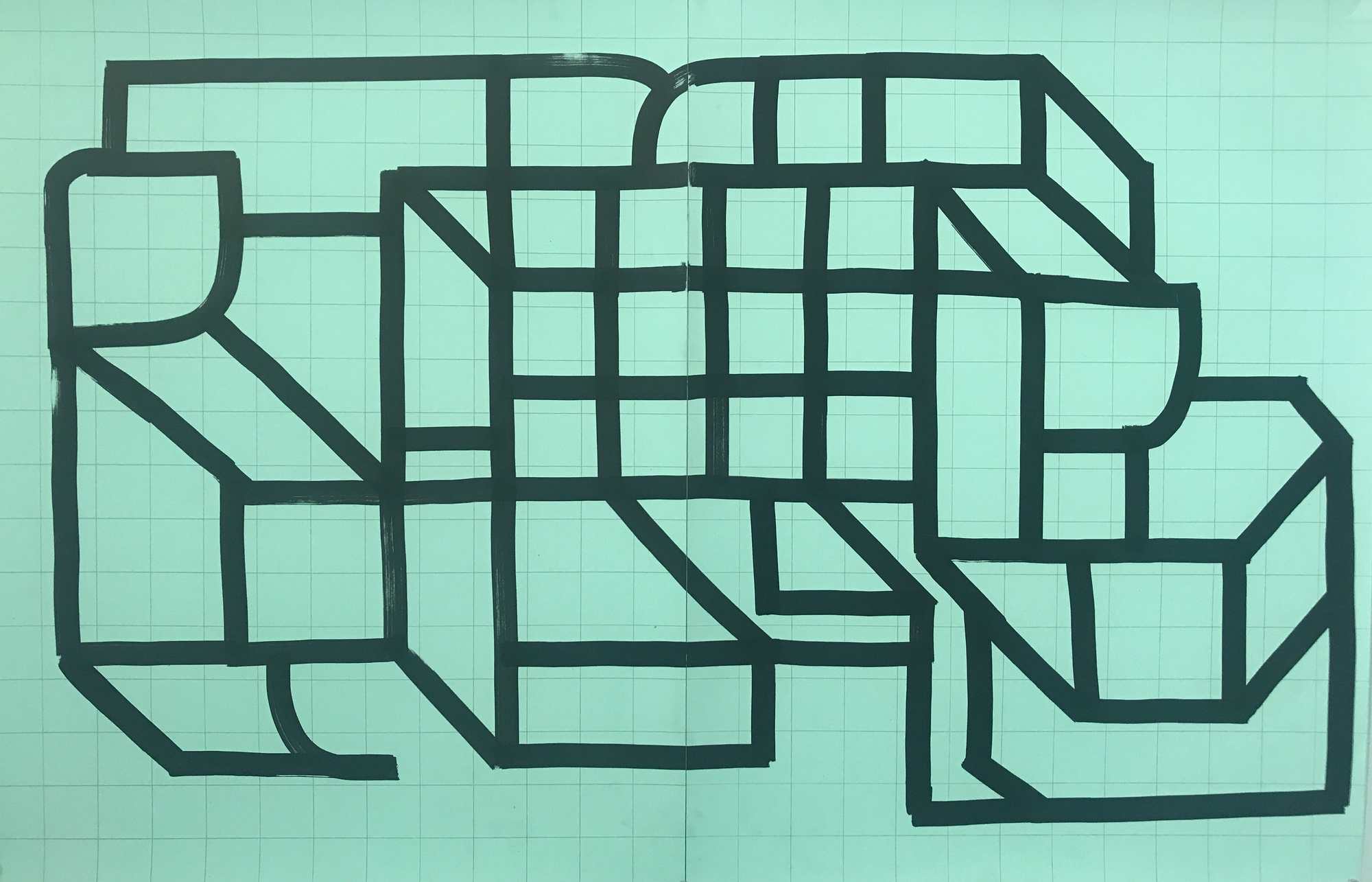#InConversation with Arvind Sundar
By Sanjana Srinivasan | May 25 2023 · 10 min. read
Arvind Sundar's body of work addresses the formalist relationships and problems involved in the construction of painting and sculpture. Geometry and mathematics serve as the inauguration point for his work which primarily revolves around the idea of play. Here, Sanjana Srinivasan speaks to Arvind about his work and inspirations.
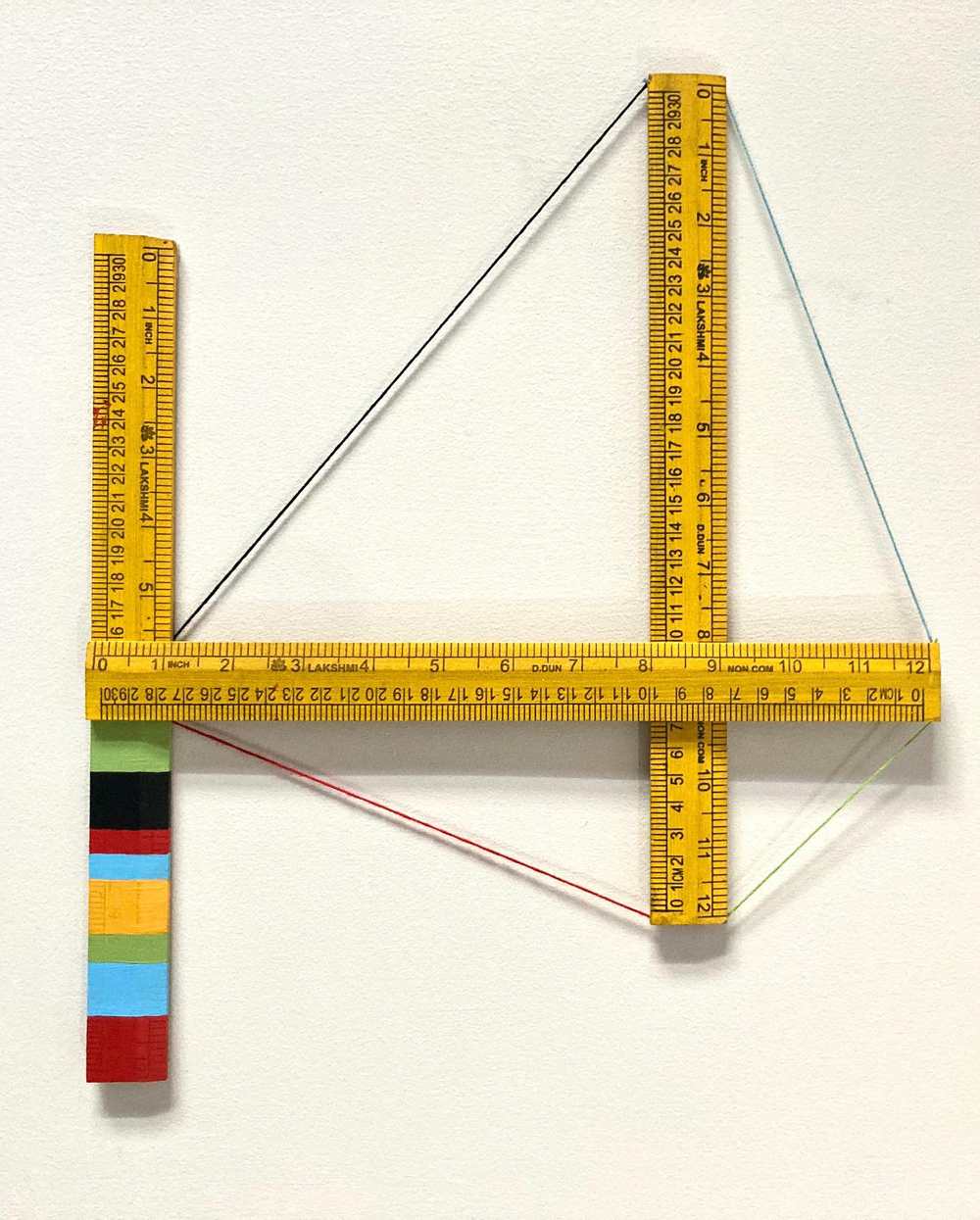

Quadrilateral, 2022
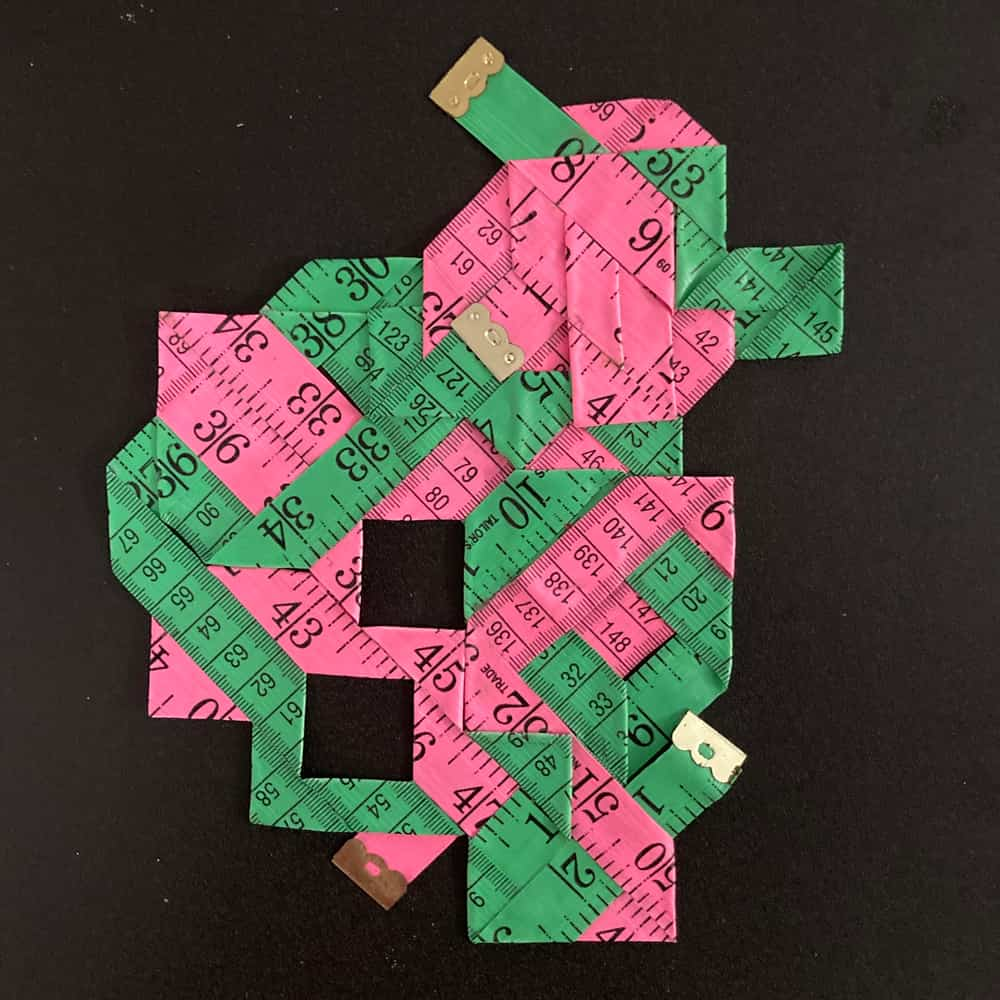

Inch Tape Drawing- III, 2022
Sanjana - Hi Arvind! Your OVR, On and Off the Grid, presents a glimpse into the kind of work you do but it concentrates on the mediums of drawing and collage alone – all largely on paper. I really want to start off with you sharing the kind of mediums you use and the variety. I've seen you work with rulers, measuring tapes, and even crab shells!! You also create really huge sculptures. So what dictates the choice and use of a particular medium?
Arvind - Hi! Having a communication design background I believe medium is the message. When we talk about perception of artwork I suppose apart from painting, all the other mediums are perceived from medium to the content. Interestingly, painting alone is perceived the other way around because of its heavy historical baggage. When I work I always keep the medium first. For example, I did a series of wall reliefs made of rulers, set squares and protractors. When I was making them, I started seeing the tools as the medium. I want to keep the relationship between form and content very fluid. I think the time of media specificity is long gone.
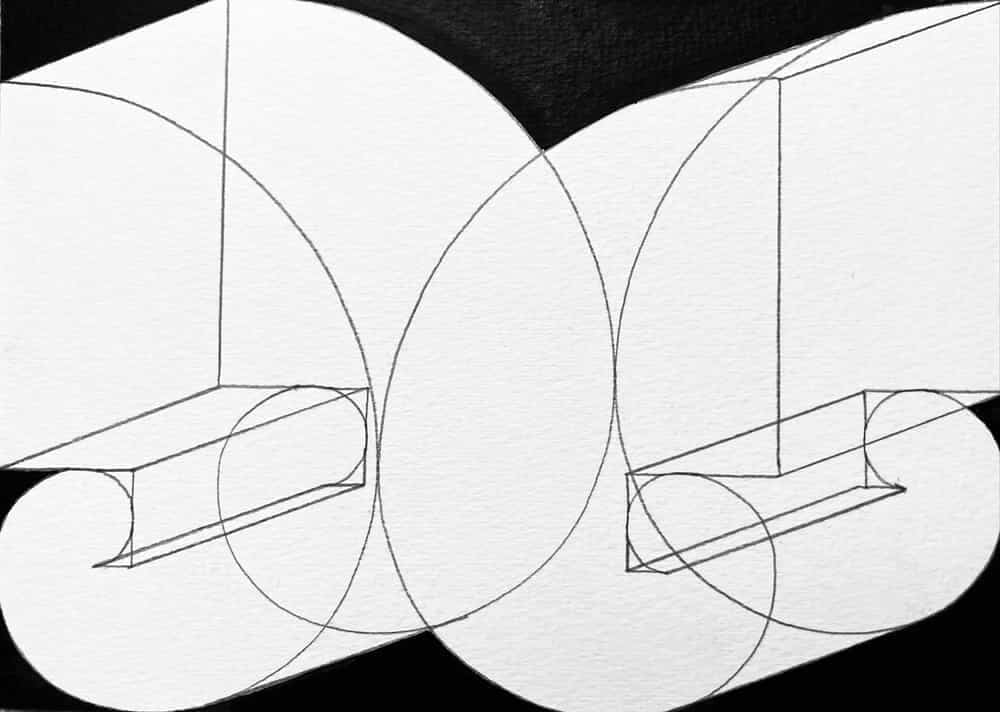

Fibonnaci Form (3), 2023
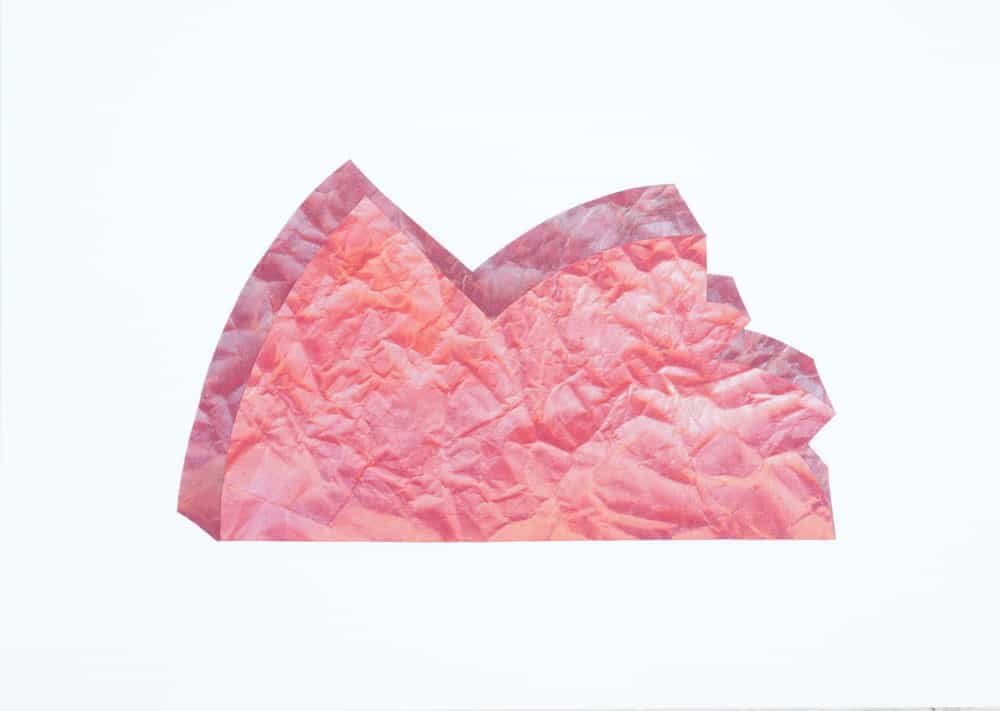

Fibonacci Form - Mars, 2022
Sanjana - Coming back to the paper based works, especially drawing and collage – would you say that drawing offers a centre to your practice? A place to begin? And that collage allows you to play with form? How do both work?
Arvind - This question reminds me of a quote by David Hockney where he says “Drawing is rather like playing chess: your mind races ahead of the moves that you eventually make.” For me, this applies to both drawing and collage. I like the immediacy involved in both the ways of image making. Yes, I would say drawing is a place to begin with. With collage, I am more interested in the fast-paced meaning-making process. The technique allows me to move around and make compositions faster. And I am amazed by how a whole new image is created by bringing in images from two different sources.
Sanjana - Speaking of creating new images, how is the idea of play embedded into your practice?
Arvind - Since my practice is primarily based on systems, I like to play around it – that is, “play the system.” I started experimenting with the grid. I was interested in the modern notion of grid reestablishing the flatness of painting and being the symbol of modernity. I wanted to have an agency over that symbol. For a few years, I was playing around with the grid. Eventually I moved onto mathematical and geometrical systems. I like how the idea of play can make the absolute and concrete mathematical systems into a playground where the rules start to bend.
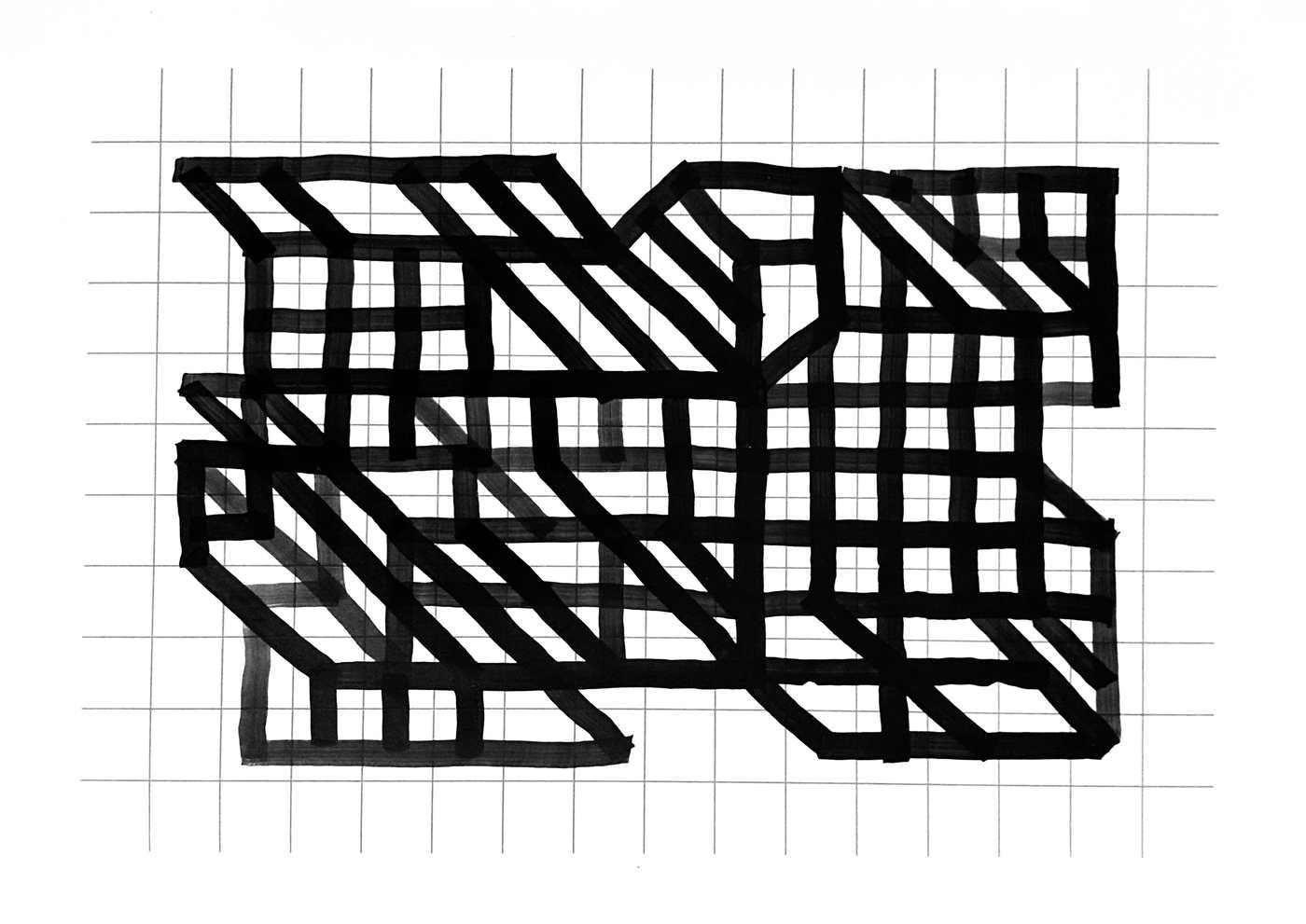

Form - XII, 2021
Sanjana - The exhibition begins with the grid. But before we dive into that topic, I want you to speak about your journey to Italy and how it transformed your practice entirely. What were you doing before and what was the kind of work you did after?
Arvind - It is interesting how roller coaster of a journey it has been. During the beginning of my career I was making political caricatures and “bad paintings.” And eventually I got interested in geometry and I was making geometric abstract paintings and that went on for a few years. I was very close to the grid by then but didn't get there yet. That is the time when I was in the first year of my grad school. During the second semester, I received a fellowship to study Italian painting and sculpture. I went to Italy that summer and it was the turning point in my practice. Seeing the Masters’ works up close and studying them gave me a fresh perspective on geometry. It was interesting to study the use of grids in 15th century paintings. It was also interesting to see the way the main cities in Italy are planned. Fortunately, the Venice Biennale was going on at that time and I was able to witness many semblances of the modern grid. All this was steering my practice towards the exploration of the grid.
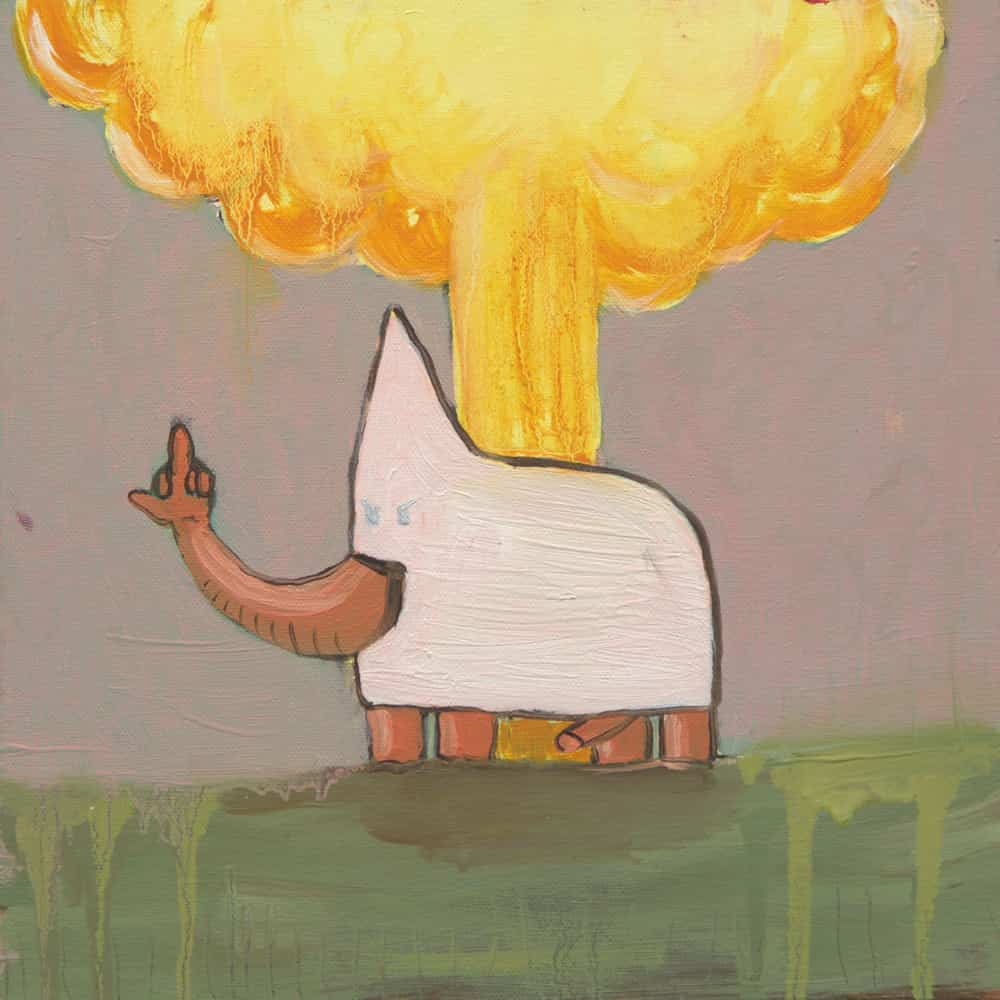

Trumpet, 2015
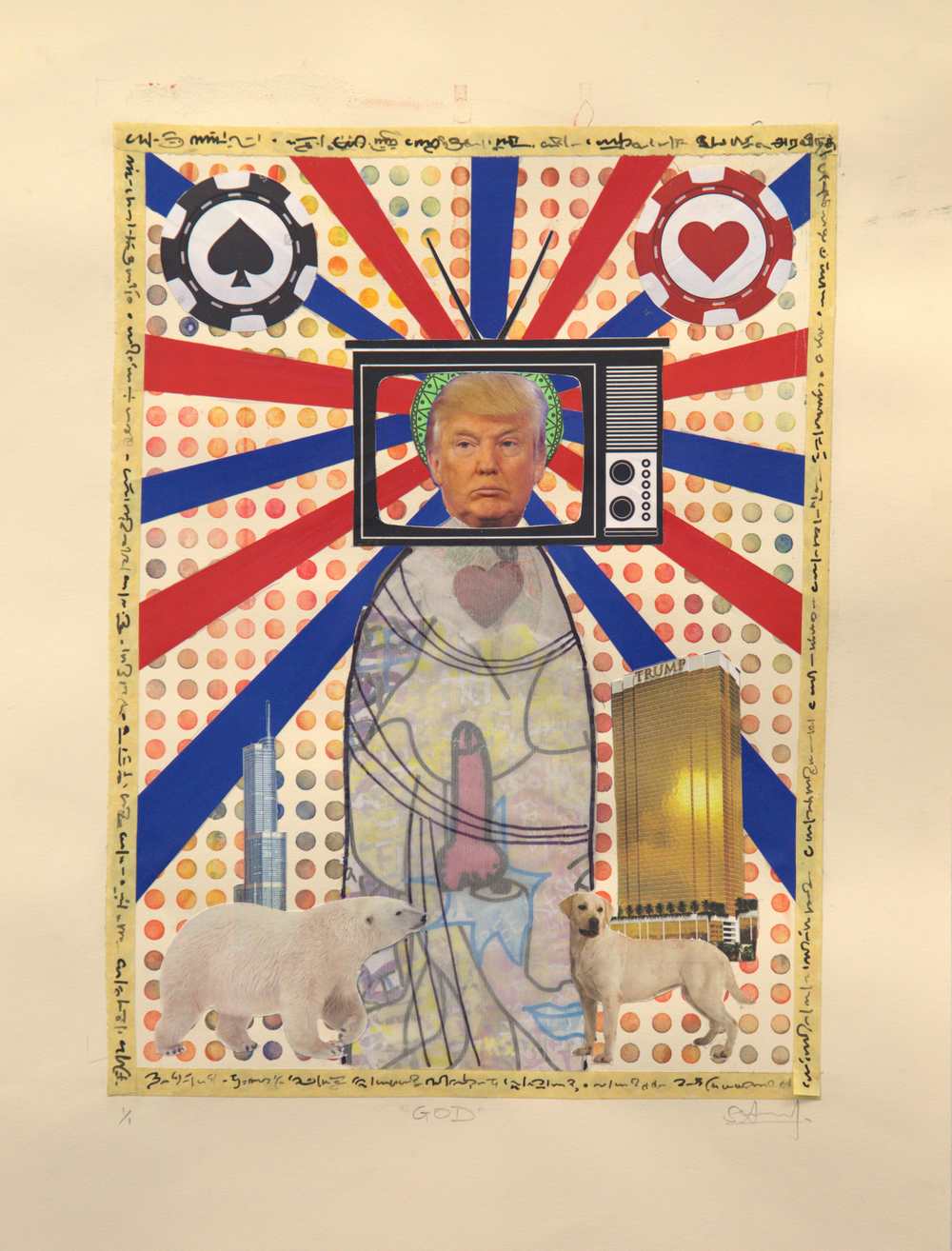

GOD, 2015
Sanjana - So after this trip, you were still studying in Chicago right? How did studying in America affect the kind of subjects/themes you have come to work with? Or would you say that one had nothing to do with the other at all?
Arvind - Actually, I moved to the School of Art at University of Cincinnati before my Italian fellowship. Being/studying in the US has a huge impact on my practice. Getting exposed to the whole new way of art pedagogy was something very important during the beginning of my career. Another important aspect is the gallery and museum visits. When I was living in the US, I visited almost all the important museums and galleries. I even had chances to visit private collections. In regard to themes, initially when I moved to the US, I found the politics of the US very fascinating. I liked how overt things could be. My political caricatures were mostly about lobbies involving the meat industry and the 2015-16 US presidential election. Later, when I started working with geometry and grids I would say my practice became very non-objective. But yeah, the space around me keeps influencing me in some ways.
Sanjana - How has your practice developed since then?
Arvind - The exploration of grids went on for about 4 years. During that time, I wrote my MFA thesis on grids and also co-curated some shows having grids as the theme. I was experimenting with mediums for some time. I was making assemblages and readymades involving grids. Eventually I was able to understand my affinity towards the grid. I was interested in the system which the grid provides. I started exploring other systems and that is when I landed on mathematics. Mathematics is a science about systems. From then on, I have been making work based on mathematical and geometrical systems.
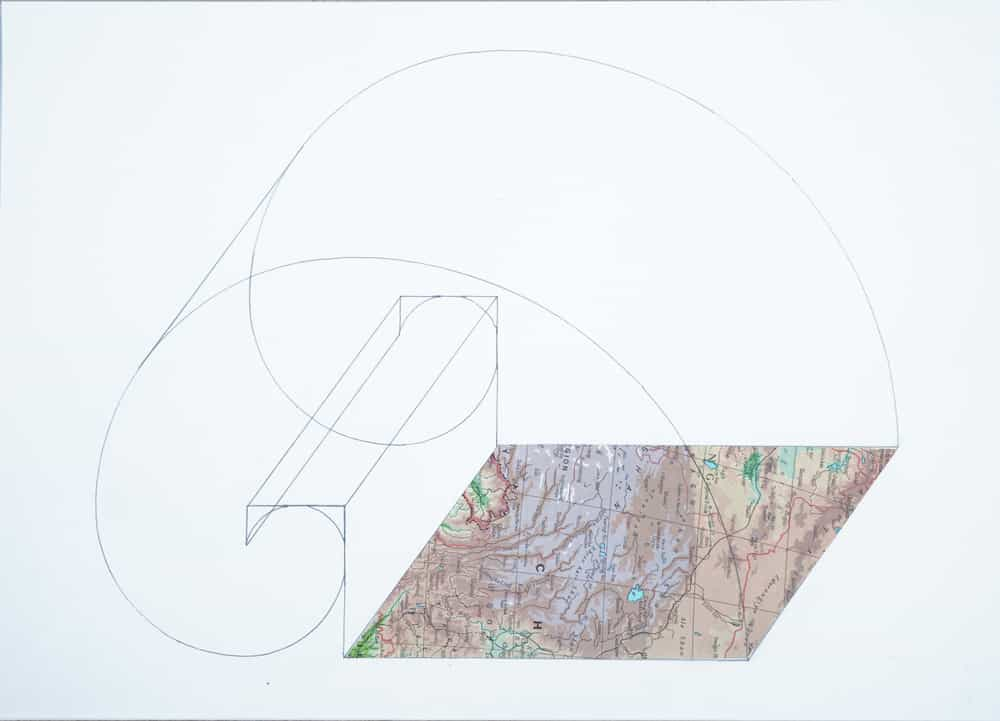

Fibonacci Space - III, 2022
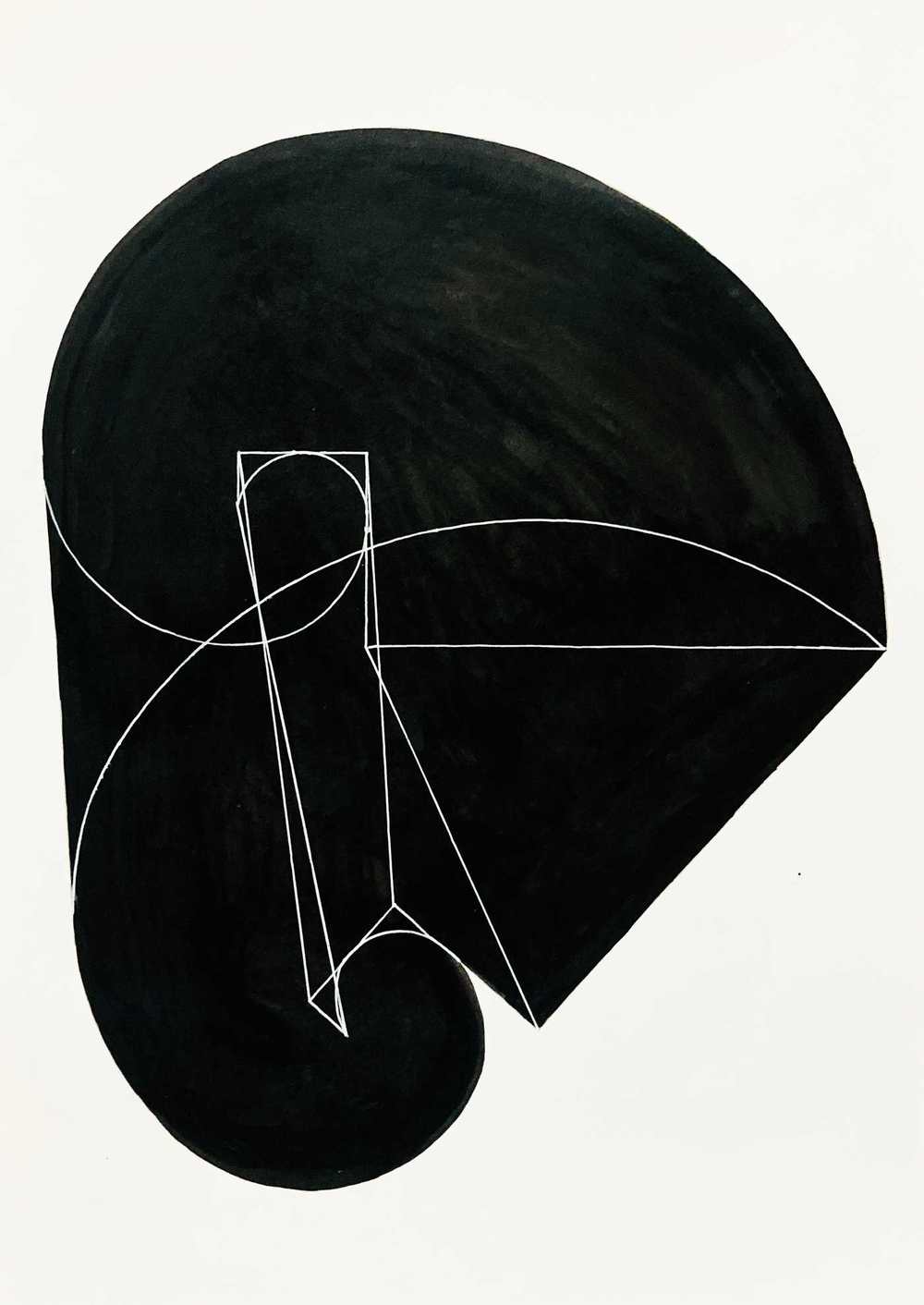

Fibonacci Space - XIII, 2022
Sanjana - Let's speak about one particular idea. Say, for example, the Fibonnaci sequence or the grid. Why is it important to you? What makes the subject – mathematics, geometry – interesting enough to make you want to explore it? What is it that you are trying to figure out?
Arvind - Fascination. I think fascination towards these systems is what makes it important to me. When I start working with one system, let's say Fibonacci numbers, I dive deep into it and try to understand it further and then explore the possibilities to make work with it. Mathematical systems are absolute and concrete in their own realm but when these systems are used in artistic practices there is a creative safe space for experiments. These playful experiments provide an agency towards the rigid and complex systems.
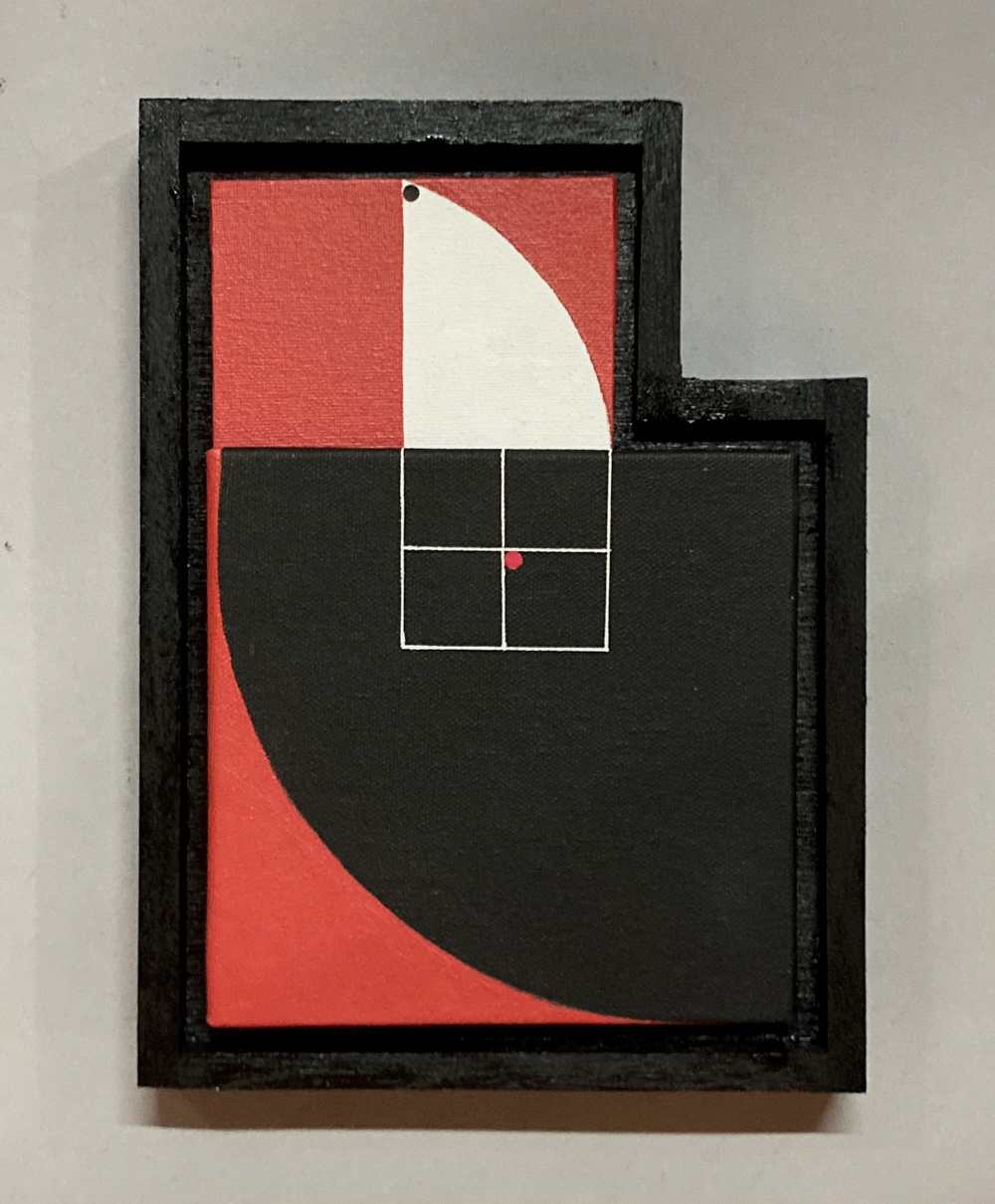

Untitled, 2020
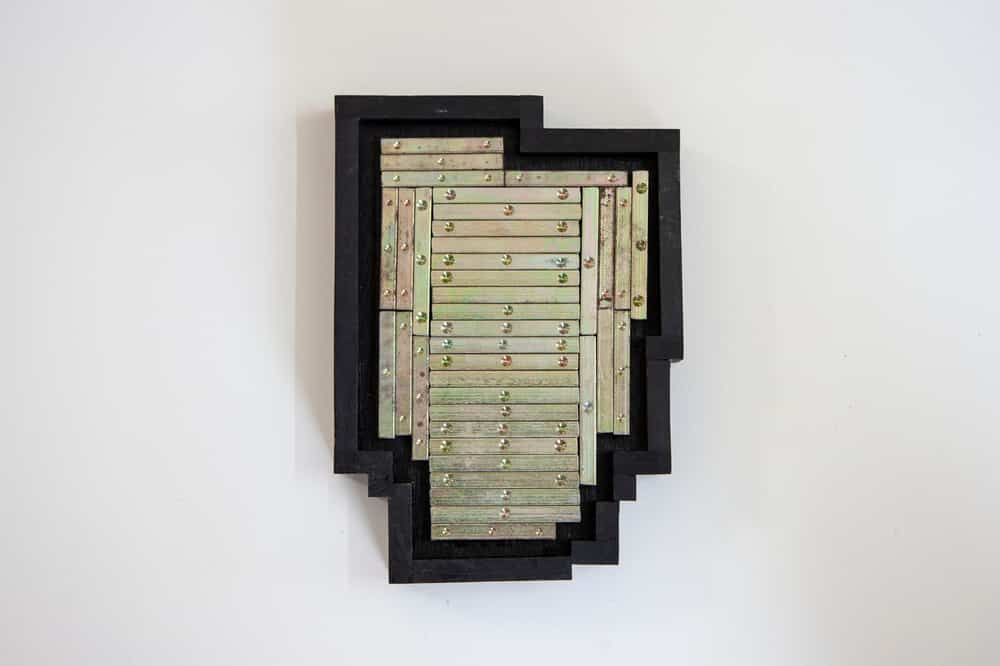

71, 2020
Sanjana - There is actually a history and connection really between mathematics and art. I remember sharing an article with you about it. But you yourself have also continuously explored that connection. It is that connection which I find most interesting. You have explored Tantra, concepts of chance and probability through the dhaayakattam or Tamil name for dice among other things. Can you speak a bit about that particular connection that you sometimes explore?
Arvind - Yes, it is a fascinating history. Right from the beginning of my career my works had a strong connection with art history. I personally think giving a little nod to the history adds a very interesting layer to the work. Tantric paintings from the 18th and 19th centuries are a great inspiration for me. These tantric paintings involve many rules and I find them interesting. It is like a predecessor to Sol Lewitt's Drawing instructions. For example, when the Tantric painting shows Kali, the artist will use a red inverted triangle resembling Kali’s tongue. Likewise there are many stock images and colours in the Tantric tradition. I find this system of art-making fascinating. Yes, I also made a series of works with Dayakattai or Indian dice. I saw a pair of Dayakattai at my ancestral home and I wanted to make work out of it. When we talk about dice, the first thing that comes to mind is probability. I made a work with it which deals with probability. When we look at it from the perspective of history we can connect it with Indian mythology.
Sanjana - That’s lovely! So Arvind, where do you think you are headed at the moment?
Arvind - I suppose branching is a better word than headed. I have been branching into different areas of interests. I was working with Fibonacci numbers which led me to study circular geometry. Actually, I am still making some work involving the grid. I would say my practice is more of a rhizome than a linear one. Right now, I am making works involving concepts of sacred geometry. Recently, Tessellation geometry has interested me. I have been playing a lot of Tetris (a puzzle video game) and also the newly discovered Einstein shape has given me some inspiration.
Sanjana - That sounds like you have a lot of interesting things on your plate at the moment. Okay, I have one last question before you go. Who are the artists who inspire you?
Arvind - This list keeps changing. I will mention some of the constants. I consider Philip Guston to be my pole star. His work and mine bear no connection though. One of my professors introduced me to Guston’s work and since then I have been studying his works and writings and he is truly one of the best painters of the 20th century. Whenever I get stuck in my practice I will read a random page from his set of writings and something will inspire me. Apart from Guston, I am inspired a lot by Russian Constructivism as a movement. Their ideas about art-making and the artist is fascinating. Bauhaus, especially the Albers couple interests me. Dorothea Rockburne and Robert Mangold are the two artists I keep looking at for their use of mathematics in their practice. Recently, I came across Mehli Gobai’s geometrical works and I love it.
View On and Off the Grid on Terrain.art.

